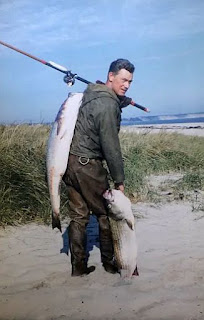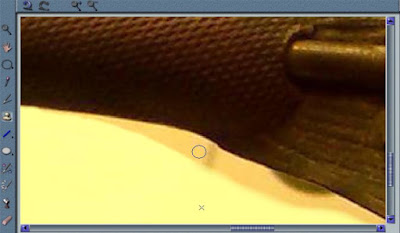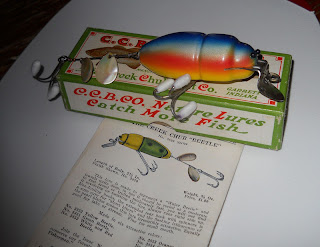Many of us fisherman aspire to become inventors of our own Lure. Some of us have in fact, cobbled together a makeshift lure in an attempt to catch fish. I myself landed a respectable sized Bass in the late 70s using a brown piece of yarn. I thought I was a genius. I assure you I was not.
This is the story of a LEGEND. The story of a lure that would change bass fishing forever....This is the story of "The Big-O"
The year is 1962. It is late winter in Oak Ridge Tennessee, and a young man is working at the Atomic Energy Commission when he receives a call and lunges for the a wall phone. His swivel-chair on wheels scoots out from underneath him, gravity takes hold, sending him to the floor....
the fall caused vertebra to pinch the man's spine and after 2 years and 2 surgeries, that man returned to work.
The year is now 1966...that same man is turning a wrench on a valve. The wrench slips causing the bone grafts in his back break free and in 1967 he undergoes two more operations. He is then placed in a body cast from his neck/shoulders to his hips. The unfortunate man is Fredrick C. Young.
So what does one do when your torso is in a cast? Well, according to Fred, he was watching a friend "Earl" mow his lawn and started whittling on a piece of wood. Fred claimed he wasn't whittling anything in particular but then decided to make the wood into a fishing plug. He and Earl made a few of them and caught fish on them...when he would go to his back appointments, Fred would test his lures on the drive back at Melton Hill Lake.
Fred sent his brother some plugs to test in the mountain lakes of western North Carolina (Santeetlah, Fontana). The plugs were very successful and Fred's brother essentially became the field tester for his plugs. His brother's name was Odis and he was 6' 6" and weighed in a 250lbs - the lures were named after Odis and became "The Big-O".
Fred would keep the plugs in egg cartons, fish them and tune them, to make them "do what I want them to do". By 1970 word was getting around about these FAT plugs and top bass anglers were looking to get there hands on a few. Fred gave a few plugs to certain anglers who were representing B.A.S.S. on tournament circles and they were having success.
In 1972 a Tournament was held on Watts Bar Lake in Tennessee. Odis was selling plugs for $10.00-$15.00 (in 1970s money) each out of the trunk of his car. It is rumored that Fred was able to carve and number around 3700 of the baits.
Fred could only carve about a dozen lures a week, never had more than a few on-hand at any time, but would receive calls from fishermen wanting them. He established a waiting list and got behind rather quickly. Fred also understood that the cost of mass-producing the Big-O would be too expensive for him.
In the spring of 1973 Fred received the trade name for "The Big-O" and then got a call from Cotton Cordell. Cordell and Young met at the Cordell plant in Hot Springs and Fred sold the Big-O to the Arkansas lure manufacturer. After securing the rights to the Big-O, Young oversaw the design of the plastic Big O, and Cotton Cordell began manufacturing plastic Big Os and getting them into Cordell’s catalog for 1973-74. Within 13 months, the artificial lure manufacturer sold 1.3 million Big Os.
Since then the Big-O has become a legendary bass-catcher and one of the first balsa crankbaits that changed bass fishing forever. Plastic or not, the Big-O continues to produce and is still a top-selling bait, retailing today for less than it cost in 1972!
Fred passed away April 16, 1985. Shortly after his death, his daughter Glenna (White) went through the house and found tackle boxes containing hundreds of lures that had been made by her father. White packed the items up with other belongings and moved to Atlanta with the rest of her family. 26 years later, she offered up 390 of her father's original hand carved Big-O's at auction in 2011. She did keep Lure #1912 (the year Fred was born) It would be interesting to know where that lure is now. Fred's grandchildren own some of the lures so there are still originals that are uncirculated.
In 1992 Cordell Released a 25th year anniversary edition of the Big O, in honor of Fred.
The Cotton Cordell Big-O is still selling today...a fitting tribute to both Fred C. Young and Cotton Cordell.
Written by Chuck's Tackle Box, 5/22/22




















































